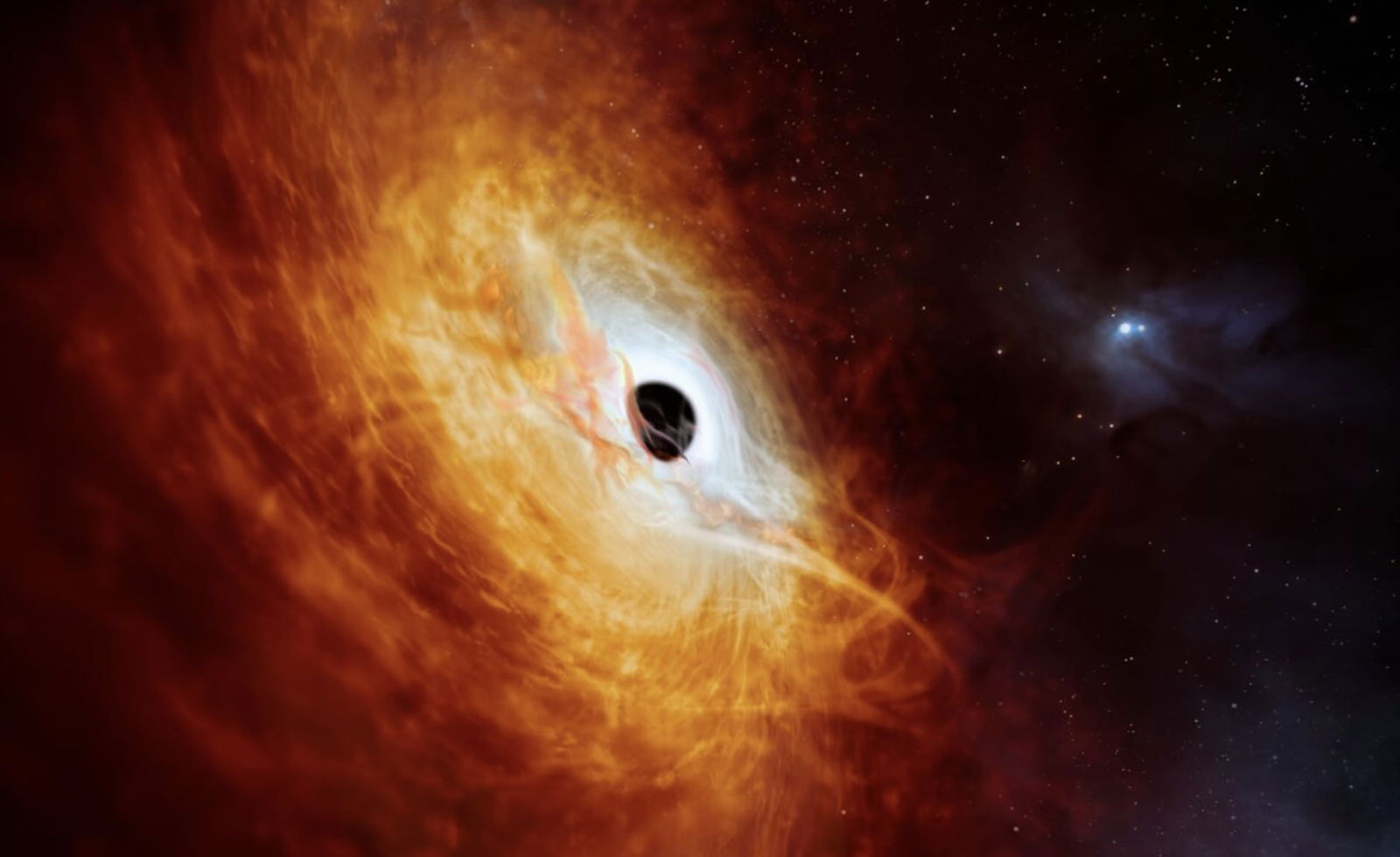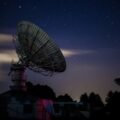Most galaxies host massive black holes at their center. Think of the gravitational potential well of the host galaxy as a bathroom sink that drains matter which happens to be spiraling down to the center where the black hole resides.
As matter falls toward the black hole, it rubs against itself and shines as a bright compact source of light, labeled a quasar (derived from “quasi-star”), emitting up to a hundred times more power than all the stars in the host galaxy. The sink size is more than ten million times smaller than the size of the galaxy.
The bright beacons of light associated with quasars are detectable with the Webb telescope out to great distances, when the Universe was less than a billion years old and the host galaxies were only a few hundred million years old.
Our telescopes were much less sensitive sixty years ago. The first quasar, discovered by Maarten Schmidt in 1963, was the radio source 3C273 which existed in the last 16% of the 13.8 billion-year history of the universe, at a redshift of 0.16. More recently, observers haddiscovered quasars from the first billion years of cosmic history at cosmological redshiftslarger than 6. Interestingly, these early quasars appear very different from the nearby quasars in the late universe.
In the late universe, less than a percent of all galaxies are shining as quasars. This suggests that the quasar “light-bulb” shines for less than a percent of the time. Moreover, the black hole mass makes up less than half a percent of the mass of the spheroid of stars that surrounds it within its host galaxy.
It was therefore surprising when a new preprint reported this week that a quasar labeled J1120+0641 at redshift 7.08, formed in a galaxy that is a few hundred million years old, has a black hole with a mass of 1.4 billion suns and is surrounded by stars with merely twice that mass. Most of the surrounding mass is in the form of gas, totaling ten times the black hole mass. Why is this black hole over-massive at such an early cosmic time when compared to nearby black holes?
My interpretation is simple. The growth of black holes is limited by their radiative luminosity which acts as a self-regulating valve. If they shine too brightly, the outward radiation pressure overcomes the inward pull of their gravity and matter stops fuelingthem.
This valve was first recognized by the astrophysicist Arthur Eddington a century ago, in the context of the limiting luminosity of stars. The Eddington limit is proportional to the gravitating mass. Since the quasar luminosity is proportional to the mass accretion rate, one finds that the maximum time-derivative of the black hole mass scales with that mass. This implies exponential growth, with a timescale of order 50 million years for a typical efficiency of converting rest-mass to radiation near the black hole of 10%.
Growing the black hole’s mass from a low-mass seed by orders of magnitude requires hundreds of millions of years. When this growth timescale is comparable to the age of the host galaxy, the black hole shines all the time before its mass saturates at its final value.
This suggests that the growth phase of a central black hole was far more prominent when the universe was young. But even more importantly, the heating of the surrounding gas by the quasar suppresses star formation in the host galaxy. In order for the galactic gas to fragment into stars, the gas must cool down to low temperatures of tens of degrees Kelvin above absolute zero, characteristic of molecular clouds in nearby galaxies.
However, in the presence of heating by a quasar, the pressure of the hot gas prevents fragmentation into small dense clumps that seed star formation. These circumstances lead naturally to over-massive black holes relative to the total mass in stars within the host galaxy. Plenty of gas remains warm, avoiding conversion into stars.
Once galaxies age to much more than a few hundred million years – the duration of the active phase of quasar growth, the galaxies spend most of their time making stars out of cold gas while the quasar is inactive. As a result, the mass in stars grows to be much largerthan found around the early quasar J1120+0641.
Based on the above interpretation, I wrote a recent paper with my brilliant postdoc, Fabio Pacucci, that explains the population of over-massive quasars at early cosmic times.
What were the seeds of these over-massive black holes? A natural origin is supermassive gas clouds that were predicted in a paper I wrote with Fred Rasio in 1994, and elaborated on as the “direct collapse black hole (DCBH)” formation channel in a 2003 paper with my former postdoc, Volker Bromm.
Finding over-massive black holes in the early universe is equivalent to identifying a giant baby in a delivery room. With the help of the Webb telescope, we are now getting closer to identifying their embryos.
Avi Loeb is the head of the Galileo Project, founding director of Harvard University’s – Black Hole Initiative, director of the Institute for Theory and Computation at the Harvard-Smithsonian Center for Astrophysics, and the former chair of the astronomy department at Harvard University (2011-2020). He is a former member of the President’s Council of Advisors on Science andTechnology and a former chair of the Board on Physics and Astronomy of the National Academies. He is the bestselling author of “Extraterrestrial: The First Sign of Intelligent Life Beyond Earth” and a co-author of the textbook “Life in the Cosmos”, both published in 2021. The paperback edition of his new book, titled “Interstellar”, was published in August 2024.

